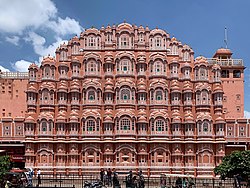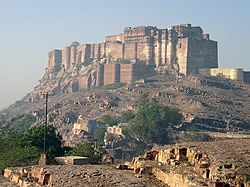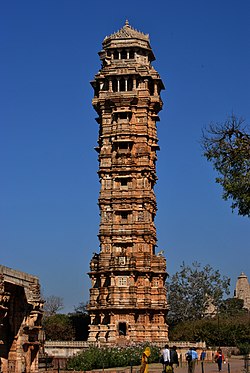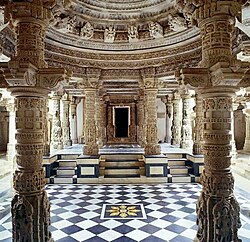This article may require copy editing for grammar, style, cohesion, tone, or spelling.(December 2025) |
This article needs additional citations for verification .(November 2024) |

Rajasthan is one of the most popular tourist destinations in India, for both domestic and international tourists. Rajasthan attracts tourists for its historical forts, palaces, art and culture with its slogan "Padharo Mhare Desh (Welcome to my land)". [1] The capital city, Jaipur, also known as Pink City, is a very popular tourist destination and it is a part of the Golden Triangle. The Walled City of Jaipur is only the second Indian city to be recognized as a UNESCO World Heritage Site, [2] after Ahmedabad.
Contents
- Palaces
- Forts
- Hill forts in the World Heritage list
- Other forts
- Fairs and Festivals
- Wildlife Sanctuaries and National Parks
- Religious Sites
- Popular tourist attractions
- See also
- References
- External links








The palaces of Jaipur, lakes of Udaipur, and desert forts of Jodhpur, Bikaner, and Jaisalmer are among the most preferred destinations of many tourists, Indian and foreign. Tourism accounts for almost 15% of the state's domestic product. [3] In 2019, 52 million domestic tourists visited Rajasthan. [4]
























